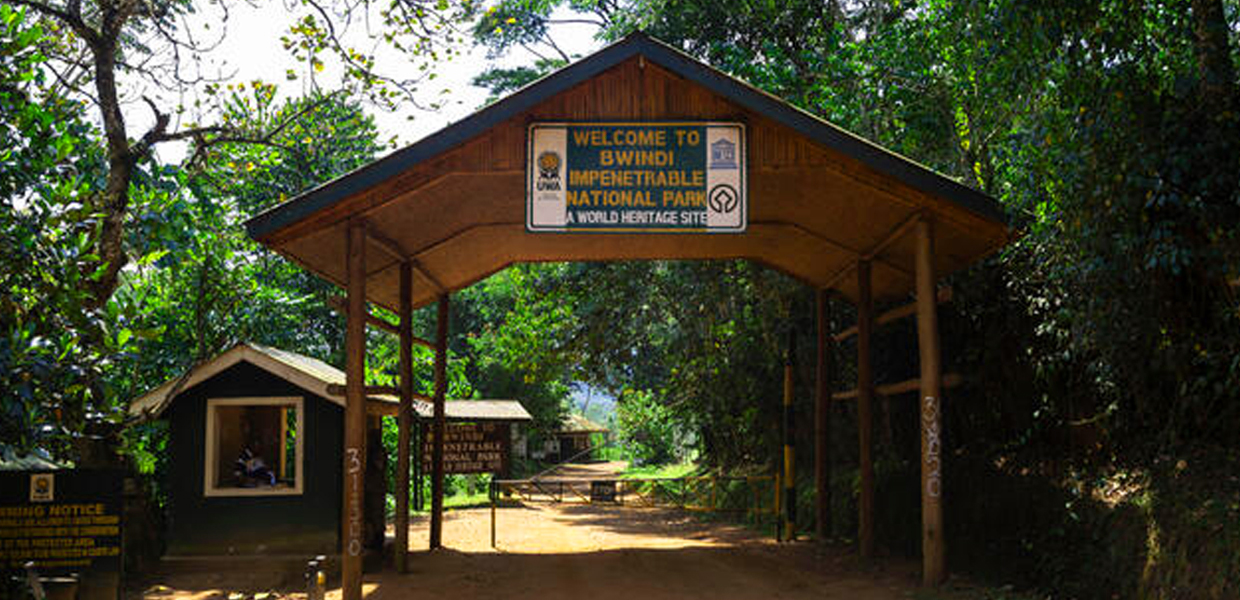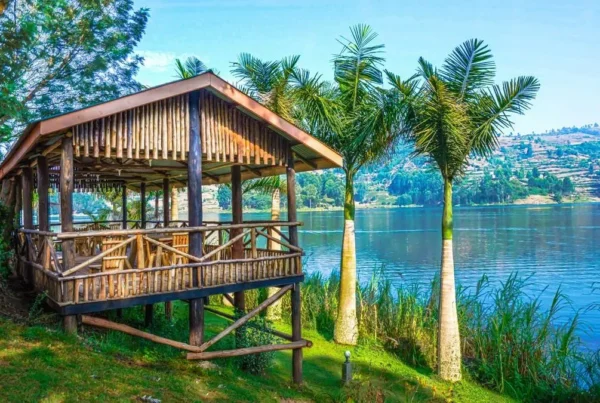Buhoma Sector: The Gateway to Uganda’s Gorilla Haven
Stepping into a Pristine Wilderness
In the northwestern reaches of Bwindi Impenetrable National Park, where misty mountains rise from rolling valleys and dense forests cloak the slopes in emerald splendor, lies Buhoma Sector, a sanctuary of unparalleled natural beauty. Renowned for its biodiversity and cultural richness, Buhoma represents a destination where adventure, conservation, and cultural heritage intersect, providing travelers with an immersive experience into one of Africa’s most extraordinary ecosystems. Unlike the more frequented tourist corridors, Buhoma exudes a sense of intimacy, where the forest’s rhythm dominates, and wildlife encounters evoke awe and reverence.
From the moment the sector is entered, the sights and sounds of the forest engage the senses. The forest canopy, heavy with mist and moss, shelters species found nowhere else, while the calls of primates and the distant roar of waterfalls create a symphony that underscores the wilderness’s vitality. This sector, long celebrated for its successful gorilla conservation programs, provides not only a window into the lives of these magnificent creatures but also into the cultural tapestry of communities whose existence has been intertwined with the forest for generations. Every journey through Buhoma is a narrative of ecological wonder and human resilience, inviting travelers to experience the essence of Uganda’s wild heart.
Geographical Setting and Location
Buhoma Sector is located in Kanungu District, forming the northwestern entry point to Bwindi Impenetrable National Park, a UNESCO World Heritage Site recognized for its global ecological importance. The sector lies at elevations ranging from approximately 1,160 to 2,500 meters above sea level, resulting in a tropical montane climate characterized by cool mornings, warm afternoons, and frequent misty conditions. This elevation diversity creates microclimates that support a wide variety of endemic flora and fauna.
The sector’s terrain is distinguished by steep hills, narrow valleys, and dense forest patches interspersed with rivers and streams. These natural features have historically limited extensive human settlement, preserving much of the forest’s pristine character. Buhoma also serves as an ecological corridor, connecting Bwindi’s forests to adjacent landscapes in the Democratic Republic of Congo, thereby facilitating wildlife movement and genetic diversity for critical species such as the mountain gorilla. The sector’s geographical positioning, combined with its accessibility from the town of Buhoma, renders it a pivotal hub for conservation and tourism activities within the park.
Historical and Cultural Significance
The history of Buhoma Sector is inseparably linked to both its forested environment and the communities that have inhabited its periphery for centuries. The Batwa pygmies, the forest’s original custodians, have traditionally lived in harmony with the ecosystem, relying on it for food, shelter, and medicinal resources. Their intricate knowledge of the forest’s flora and fauna has been passed down across generations, influencing contemporary conservation strategies and enhancing scientific understanding of montane ecosystems.
The establishment of Bwindi Impenetrable National Park in 1991 necessitated the relocation of the Batwa and other local communities, creating profound social and cultural disruptions. Nevertheless, the Batwa have preserved elements of their heritage through music, dance, storytelling, and craftsmanship. Visitors to Buhoma are afforded the opportunity to engage with these cultural expressions, offering a unique glimpse into a living heritage that has adapted to modern pressures without losing its traditional essence.
The Bakiga and Bafumbira communities, who inhabit the surrounding hillsides, contribute to the cultural landscape through agriculture and traditional practices. Terraced farming of bananas, tea, and coffee is a common sight, reflecting centuries of adaptation to the steep, forested terrain. Festivals, communal rituals, and seasonal celebrations remain closely tied to natural cycles, demonstrating a cultural commitment to ecological stewardship that has endured despite the pressures of modernization.
Biodiversity and Ecological Value
Buhoma Sector is globally acknowledged for its remarkable biodiversity, serving as a crucial habitat for the endangered mountain gorilla. Several habituated gorilla families reside within the sector, allowing controlled trekking experiences that are both scientifically significant and emotionally transformative for visitors. The forest provides these gorillas with abundant food sources, safe breeding grounds, and a protected environment, ensuring the species’ survival. Observing gorillas in their natural habitat offers an unparalleled opportunity to witness social hierarchies, playful interactions, and familial dynamics, revealing the intricate fabric of wildlife life within this ecosystem.
Beyond gorillas, Buhoma’s forests are home to chimpanzees, forest elephants, golden monkeys, duikers, and a diverse array of avian species. Rare orchids, medicinal plants, and hardwood trees contribute to the forest’s ecological complexity, supporting both wildlife and local communities. Seasonal variations in flowering, fruiting, and animal movement create a dynamic and ever-evolving environment, underscoring the forest’s role as a living laboratory for biodiversity research and ecological conservation.
Conservation initiatives within Buhoma focus on maintaining ecosystem integrity rather than solely protecting individual species. Anti-poaching patrols, habitat restoration, and community-driven sustainable agriculture programs have been implemented to reduce anthropogenic pressures and enhance the forest’s resilience. Additionally, the sector’s contribution to water catchment, carbon sequestration, and soil conservation extends its ecological importance beyond national borders, establishing Buhoma as a critical node in regional environmental stability.
Gorilla Trekking: A Profound Encounter
The defining attraction of Buhoma Sector is undoubtedly gorilla trekking, a physically demanding but spiritually enriching experience. Trekkers traverse dense forest, steep ridges, and river valleys under the guidance of trained rangers before encountering a gorilla family. The initial sight of a silverback or an infant gorilla evokes profound emotions of awe, respect, and connection to the natural world. Such encounters are transformative, offering insights into gorilla behavior, social organization, and the subtleties of non-human communication.
Gorilla trekking is strictly regulated to minimize environmental impact and disturbance to the animals. Visitor groups are limited in size, and interactions are monitored to ensure the safety and well-being of both gorillas and humans. This careful balance underscores the importance of responsible tourism in maintaining ecological integrity while providing educational and emotional enrichment for travelers. The experience of observing gorillas in their natural habitat reinforces global conservation awareness and inspires ongoing support for both local and international preservation efforts.
Community Engagement and Sustainable Tourism
Sustainable tourism practices are central to Buhoma’s conservation model. Local communities are actively involved in tourism operations, ensuring that economic benefits are equitably distributed and cultural heritage is preserved. The Buhoma Community Gorilla Camp exemplifies this approach, offering employment opportunities, skill development, and direct revenue to residents. The reinvestment of tourism income into healthcare, education, and infrastructure has created tangible improvements in community well-being, linking conservation success directly to social development.
Cultural engagement extends beyond economic participation. Visitors are invited to experience traditional music, dance, and craftwork, and to observe agricultural practices and local culinary traditions. Such interactions provide travelers with a holistic understanding of human-environment interdependence, while empowering communities to maintain cultural continuity. Environmental education initiatives targeting youth and schools further enhance conservation outcomes, cultivating a new generation of forest stewards invested in preserving Buhoma’s ecological and cultural heritage.
Hiking, Nature Walks, and Scenic Exploration
Buhoma Sector offers extensive opportunities for hiking and nature exploration. Trails wind through forested valleys, alongside streams and waterfalls, and over steep ridges that provide panoramic views of the surrounding mountains. These treks allow visitors to experience the forest’s subtleties firsthand, observing rare plants, endemic birds, and elusive wildlife in their natural habitats.
Guided walks include interpretive explanations of ecological relationships, plant uses, and cultural practices, transforming every excursion into a comprehensive educational experience. The physical demands of hiking steep and often slippery terrain are balanced by the immersive engagement with one of the world’s most biologically diverse forests. Each journey reinforces the complexity of ecosystem interconnections, illustrating the delicate balance that sustains life within Buhoma Sector.
Climate and Optimal Visiting Periods
Buhoma Sector experiences a tropical montane climate, moderated by its elevation. Rainfall occurs primarily in two main seasons: March to May and September to November. During these periods, the forest becomes lush and vibrant, although trekking conditions can be challenging due to slippery trails and swollen rivers.
Dry seasons, from June to August and December to February, provide optimal conditions for trekking and wildlife observation. Temperature variations between day and night, especially at higher altitudes, require preparation for sudden changes. Despite seasonal differences, each visit offers unique opportunities to observe wildlife behavior, flowering cycles, and forest dynamics, ensuring that Buhoma remains a compelling destination throughout the year.
Accommodation and Visitor Experience
Accommodation in Buhoma Sector is designed to blend harmoniously with the natural environment while offering comfort and immersive experiences. Eco-lodges and community camps use sustainable materials, solar energy, and responsible waste management practices. The Buhoma Community Gorilla Camp provides both comfort and proximity to trekking trails, enabling visitors to engage fully with the forest while supporting local communities.
Hospitality in Buhoma emphasizes authentic, personalized experiences. Guests are welcomed with traditional greetings, locally sourced refreshments, and opportunities to observe cultural practices firsthand. Dining experiences often feature fresh, organic produce from surrounding farms, reinforcing the connection between sustainable agriculture, community well-being, and ecological stewardship. Accommodation in Buhoma is therefore not merely functional but transformative, allowing travelers to understand the intricate relationship between culture, environment, and conservation.
Challenges and Conservation Initiatives
Despite its protected status, Buhoma Sector faces challenges such as human-wildlife conflict, deforestation, poaching, and the impacts of climate change. These factors threaten both biodiversity and the livelihoods of local communities.
Conservation efforts in Buhoma are multifaceted, combining scientific research, community involvement, and policy enforcement. Anti-poaching patrols, habitat restoration, and ecological monitoring are complemented by environmental education programs targeting youth and schools. The integration of community participation ensures that conservation strategies are inclusive, adaptive, and sustainable, protecting both the forest ecosystem and the human populations that depend upon it.
Buhoma as a Premier Ecotourism Destination
Buhoma Sector embodies the convergence of ecological wonder, cultural richness, and community resilience. Its mist-laden forests, endangered gorillas, and vibrant communities create a destination that is both awe-inspiring and transformative. Visitors are immersed in landscapes largely unchanged for centuries, while engaging with communities whose stewardship exemplifies sustainable living.
Every experience in Buhoma, from gorilla trekking to cultural interactions and hiking adventures, deepens understanding of the delicate balance between human activity and ecological preservation. For travelers seeking a meaningful encounter with one of Uganda’s most remarkable regions, booking tours and safaris through WildHorn Africa guarantees expert guidance, responsible tourism practices, and direct support for conservation and local development. Through WildHorn Africa, each journey into Buhoma Sector becomes not only a personal adventure but also a contribution to the long-term preservation of Uganda’s extraordinary natural and cultural heritage.





 WildHorn Africa – Authentic and unforgettable tours across Africa, guided by local experts who know the land, wildlife, and culture best.
WildHorn Africa – Authentic and unforgettable tours across Africa, guided by local experts who know the land, wildlife, and culture best.


